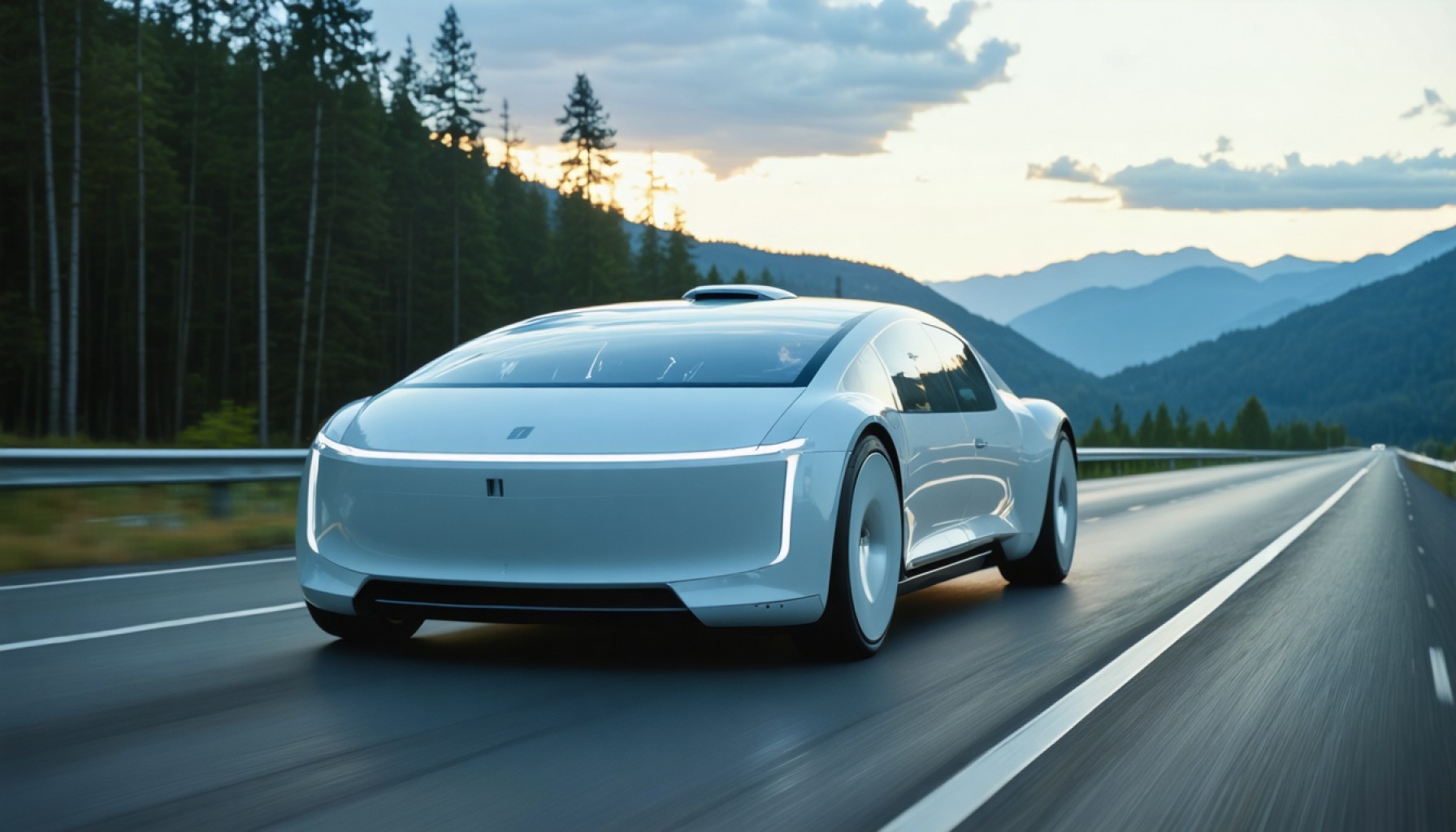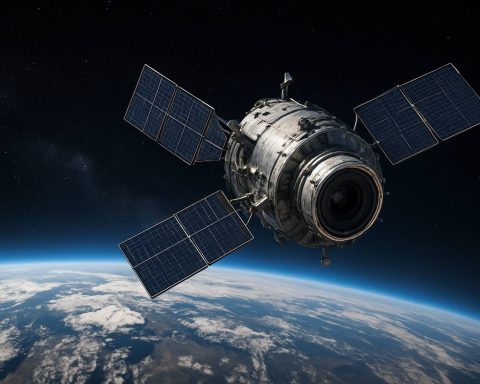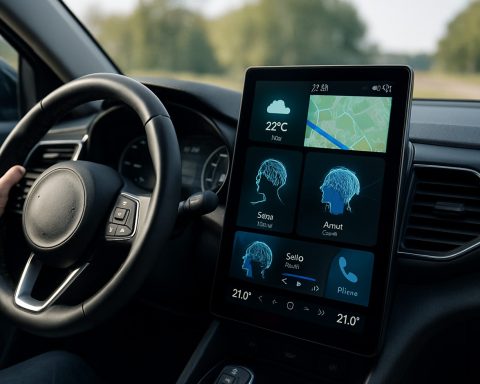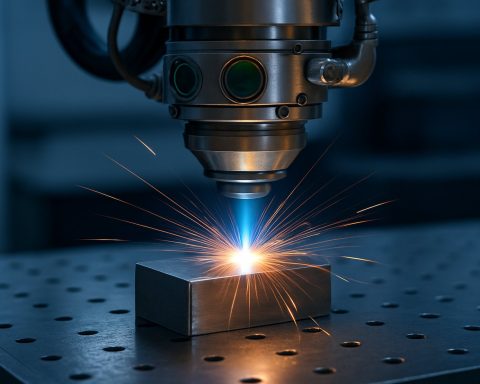- The autonomous vehicle (AV) market is experiencing rapid growth, with a projected valuation of $1.7 trillion by 2033, driven by innovations in AI and machine learning.
- AV technology promises to enhance safety and efficiency, reducing accidents and urban traffic congestion.
- Major companies like Tesla, Waymo, and General Motors are heavily investing in AV research and development to lead this transformative market.
- Challenges include inconsistent global regulations, cybersecurity threats, and the need for public trust and acceptance of driverless technology.
- Autonomous vehicles are set to become integral to smart city infrastructure, aiding in emission reduction and improving urban living conditions.
- The shift toward AVs will impact traditional driving jobs, necessitating societal adjustments and new employment strategies.
- Collaborations between automakers, tech firms, and governments are essential for overcoming current barriers and advancing technology.
The landscape of transportation is experiencing a seismic shift, driven by the relentless march of technology. Imagine a world where vehicles whisk you to your destination with seamless precision, no human intervention needed. This is the bold promise of the autonomous vehicle (AV) market, hurtling towards an economic crescendo predicted to reach a staggering $1.7 trillion valuation by 2033.
Emerging from a humble valuation of $109 billion just a few years ago, the AV sector is poised for explosive growth, with an annual compound growth rate tipping past 30%. The United States alone is gearing up for a transformative ride, with projections showing the market surging from $22.6 billion in 2024 to over $222 billion in 2033. A mix of cutting-edge technology, strategic investments, and supportive regulations is fueling this momentum.
At the heart of this transformation are dynamic innovations in AI and machine learning. These technologies, along with sophisticated sensor systems like LiDAR, are endowing vehicles with extraordinary levels of awareness and intelligence, promising not just the autonomy of navigation but a new benchmark of safety and efficiency. Picture cars that don’t just react but anticipate, preventing accidents before they happen and eradicating gridlocks in urban centers.
Financial heavyweights like Tesla, Waymo, and General Motors are betting big, pouring billions into research and development to ensure they remain at the forefront of this new frontier. Meanwhile, cities around the globe, eager for innovation, are rolling out the red carpet for autonomous testing. From the bustling streets of Shanghai to the orderly avenues of American suburbs, driverless vehicles are slowly but surely becoming part of the urban fabric.
Yet, like any grand transformation, the road to a driverless future is strewn with challenges. The lack of uniform regulations across different regions creates a patchwork of oversight that can impede global scalability. Cybersecurity presents another formidable obstacle—these interconnected machines are enticing targets for digital mischief-makers, necessitating defensive innovations as vigilant as the technology itself.
Public perception remains a cautious frontier. Trust is the bedrock of widespread adoption, and it must be earned through transparency, reliability, and education. People must see to believe that a machine can drive better than a seasoned driver. Moreover, the socioeconomic implications cannot be ignored. As automation climbs the ranks, traditional driving jobs could shrink, prompting societies to rethink employment landscapes and retraining initiatives.
The overarching vision for AVs extends beyond just the vehicles. They’re becoming integral to the smarter cities of tomorrow, contributing to reduced congestion, lower emissions, and more livable urban environments. The blending of autonomous systems with smart infrastructure will usher in an age of convenience, where your vehicle not only parks itself but communicates seamlessly with the world around it.
In the coming years, collaborative efforts between automakers, tech giants, and government bodies will likely intensify, leading to breakthroughs that we can barely imagine today. While the journey is riddled with complexities, the destination promises a future where the ease of mobility is as effortless as a spoken command and the horizon of possibility as wide as the open road.
The autonomous vehicle arena is not just a technological revolution—it’s a reimagining of movement itself, inviting us to buckle up for a thrilling ride into an era of remarkable innovation and profound change. With every mile logged and every obstacle overcome, the driverless dream edges closer to an everyday reality, reshaping how we perceive travel in the 21st century.
Revolutionizing Roads: Essential Facts Driving the Autonomous Vehicle Market
The Future of Autonomous Vehicles: What You Need to Know
The rapid evolution of autonomous vehicles (AVs) is reshaping transportation as we know it, driven by advancements in artificial intelligence, machine learning, and sensor technologies such as LiDAR. The market’s projected growth is astonishing, aiming for a valuation of $1.7 trillion by 2033. Here’s an in-depth exploration into the world of AVs, uncovering facts not covered in the source article.
Key Areas of Development in the AV Industry
AI and Machine Learning in Autonomous Vehicles
– Artificial Intelligence (AI) and Machine Learning (ML) are crucial in developing AVs. These technologies enable the vehicles to make real-time decisions, enhance learning from data trends, and improve over time. Algorithms like deep learning play a role in image and pattern recognition, making navigation more intuitive and safe.
Sensor Technologies
– LiDAR, Radar, and Cameras: These sensor systems provide a 360-degree view, helping the vehicle to detect objects, recognize traffic signs, and navigate complex environments. LiDAR, in particular, offers precision mapping and can operate in various weather conditions.
How-To: Navigating the Road to AV Adoption
1. Stay Informed: Keep abreast with the latest developments in AV regulations and technologies by following news from credible sources like Waymo.
2. Advocate for Policy Change: Engage with local and national policymakers to promote the development of AV-friendly infrastructure.
3. Embrace Technology: Explore current semi-autonomous features in existing vehicles, like adaptive cruise control and parking assist, which offer a glimpse into the future of fully driverless cars.
Real-World Use Cases and Market Forecasts
Autonomous vehicles are already on roads around the world in test phases:
– Ride-Sharing: Companies like Uber and Lyft are experimenting with AVs to provide efficient, round-the-clock services with their fleets.
– Public Transport: Some cities are deploying driverless shuttles to enhance public transport systems, decreasing wait times, and covering less accessible routes.
Market forecasts project significant growth, with strategic partnerships between automotive and tech companies driving innovation.
Industry Trends and Predictions
– Electrification: The integration of electric vehicles (EVs) with autonomy will likely dominate the market, bringing environmental benefits.
– Shared Mobility: AVs are expected to boost shared mobility models, reducing the need for personal vehicle ownership.
– Urban Planning Improvements: Cities are beginning to redesign infrastructure to accommodate and optimize for AVs, potentially leading to redefined urban landscapes.
Challenges and Controversies
– Regulatory Hurdles: The lack of standard regulations presents a challenge. Different countries have disparate rules, complicating global deployment.
– Cybersecurity Threats: As AVs become more connected, they pose potential cybersecurity risks, necessitating robust security protocols.
– Public Acceptance: Ensuring public trust through rigorous safety testing and transparent communication is crucial for widespread adoption.
Actionable Recommendations
– Consumer Involvement: Participate in local AV trials and workshops to understand the technology and its impact on daily life.
– Advocate for Training Programs: Support workforce transition programs that train individuals in new skills needed in an AV-dominated landscape.
Conclusion: What Lies Ahead
Autonomous vehicles hold the promise of transforming travel with increased safety, convenience, and reduced environmental impact. As technology continues to advance, collaboration between industries and governments will be key in addressing challenges and ensuring a smooth transition to a driverless future.
For further insights into autonomous vehicle technologies, visit Tesla or check out more about safety standards at General Motors.
By keeping informed, advocating for thoughtful regulation, and embracing emerging technologies, we can all contribute to a safer, more efficient, and sustainable transportation future.










